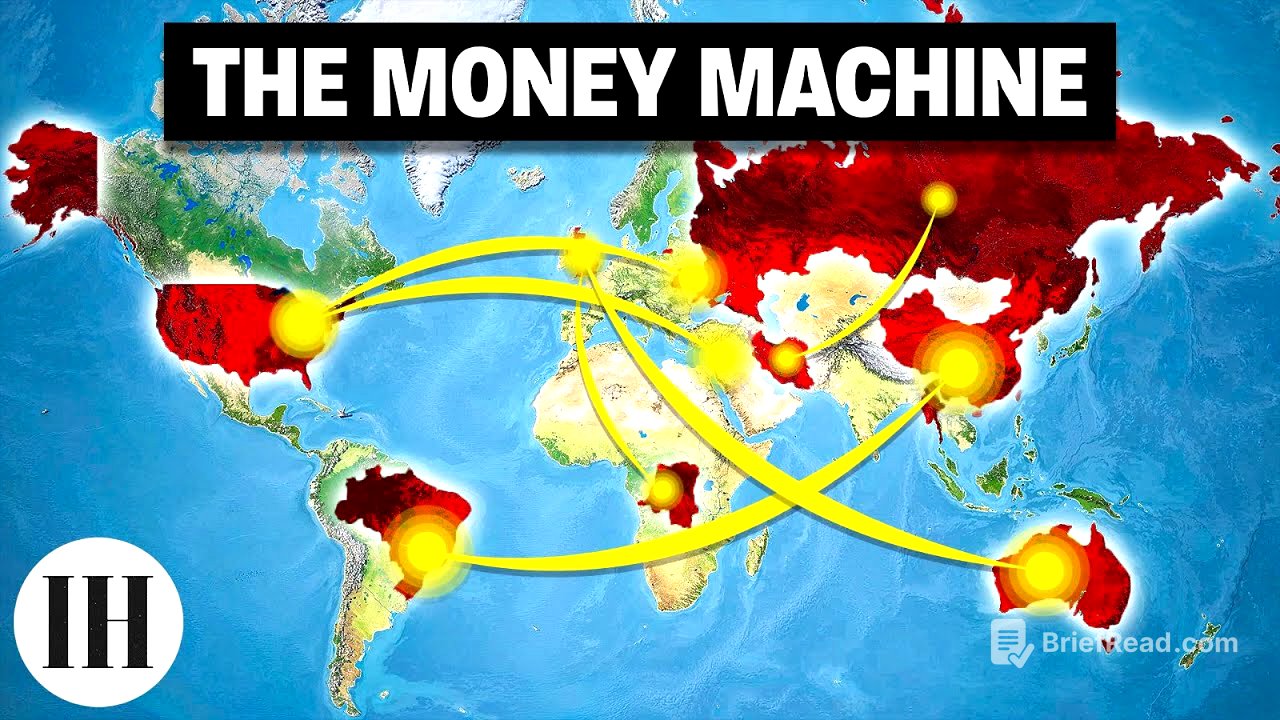TLDR;
The video examines how war is immensely profitable for a select few, particularly defense companies, at the expense of ordinary citizens. It highlights the interconnected system involving defense contractors, policymakers, lobbyists, and the media, which perpetuates a cycle of conflict and increased military spending. The video also addresses the economic consequences of prioritizing military spending over domestic programs, contributing to the struggles faced by many Americans.
- Defense companies' stocks surge during conflicts.
- Lobbying and political influence drive military spending.
- Military spending is prioritized over domestic programs.
Introduction: The Economics of War [0:00]
The video opens by highlighting recent escalations in the Middle East, including strikes between Israel and Iran, and the United States' involvement. Despite political rhetoric about peace, the US has been consistently involved in foreign conflicts this century. While war is widely considered a tragedy, a small group profits immensely from it, as evidenced by the surge in defense stocks following these conflicts. For example, Lockheed Martin, RTX Corp, and Northrop Grumman saw their shares increase after Israel's attack on Iran.
Defense Industry's Financial Gains During Conflicts [0:38]
The defense industry experiences significant financial gains during conflicts. Following Russia's invasion of Ukraine in 2022, BAE Systems' stock jumped by 35%. Similarly, after Israel's raid on the West Bank, prices rose again by almost 30%, resulting in billions for the company's shareholders. In 2024, US defense companies experienced one of their most profitable years, with sales increasing by 30%. While defense companies' earnings soared, many Americans faced inflation, high interest rates, and strained household budgets. Military spending increased while domestic programs were cut by $63 billion, indicating that war benefits a select few, not ordinary people or military personnel.
The Military-Industrial Complex [1:54]
The US allocates 13% of its budget to the military. A deeply interconnected system has developed, linking defense contractors, policymakers, lobbyists, and the media. This system shapes the perception of threats and government responses. Companies like Lockheed Martin, Raytheon, and Northrop Grumman sell directly to the government, which spent over $877 billion on its military in 2023, surpassing the next nine countries combined. Over half of this amount went to private defense contractors. Demand in this industry increases during conflict, influenced by media reporting.
The Role of Media Framing [3:14]
The video highlights how media framing can influence public perception of events. Different news outlets present the same event with varying angles, emphasizing different aspects and narratives. This is illustrated through contrasting headlines from left-leaning and right-leaning outlets regarding Trump's criticism of a CNN reporter. The importance of accessing diverse perspectives to gain a comprehensive understanding of events is emphasized, recommending Ground News as a tool to compare news coverage from different political leanings.
Incentives in the Defense Industry [4:26]
Unlike typical businesses that compete on product quality and price, defense companies compete to sell weapons. Their success is tied to conflict, as a more unstable world leads to more contracts. Lockheed Martin's sales jumped by 14% at the start of 2024 due to demand for its missile systems in Israel. Following the Ukrainian war, the US government issued $80 billion in additional defense contracts to private corporations. These companies profit from war, instability, and fear, and they spend billions lobbying the government to sell weapons.
Lobbying and Political Influence [5:30]
In 2022, the defense sector spent over $130 million on lobbying in Washington, which equals to over $350,000 every single day. Former Secretary of Defense Mark Esper was previously a top lobbyist for Raytheon. Over 50% of senior Pentagon officials go on to work for defense contractors after leaving government. Defense companies are deeply embedded across the political system, funding politicians, think tanks, and media outlets, creating a self-reinforcing loop. Politicians vote to expand military budgets, and companies win massive contracts, allowing them to further fund politicians.
The Cycle of Military Spending [6:41]
Over the past few decades, military spending has exploded. Adjusted for inflation, the US military budget has nearly doubled from $400 billion per year in the early 2000s to $700 billion today. While the defense industry employs over 2 million people and supports local economies, the underlying dynamic remains that profit is tied to conflict. If stability leads to lower earnings and instability unlocks massive revenue, the system effectively rewards chaos.
Contemporary Examples and Consequences [7:47]
Tensions between Israel and Iran are causing defense stocks to surge. Raytheon, the maker of interceptors used in Israel's Iron Dome, jumped 18% in just a couple of weeks. Palantir, a data analytics firm specializing in military technology, saw its trading volume triple overnight as investors anticipated fresh government contracts. Every missile launched, troop deployed, and overseas base maintained sends defense companies' profits higher. Global defense spending is hitting record highs, benefiting arms exporters from various countries.
Economic Impact on Ordinary Citizens [8:52]
War and military infrastructure are incredibly expensive. Approximately one-sixteenth of the US budget is spent on the military, making it the largest category of government spending. The average US citizen spends over $2,800 each year on the military. Every dollar spent on weapon systems could have been used to lower healthcare costs, fix infrastructure, or support families. Military spending has created an economic loop where public money flows to a few firms and shareholders, with taxpayers funding contracts and the wealthy profiting.
Conclusion: The Structural Problem [9:54]
The system has evolved to serve the interests of a small, well-connected group at the expense of everyone else. A network has formed where actors benefit from rising tensions and growing budgets, even if they don't actively push for conflict. What is framed as national security often operates as a reliable economic engine. As long as the incentives remain in place, the cycle of war and profit will continue.









